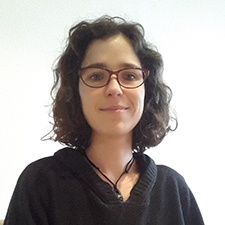As part of our New Year New Job content on PCGamesInsider.biz, we are catching up with people from around the industry to find out a bit more about what their role entails.
Today, Agathe Pillot from Total War maker Creative Assembly shares what the role of technical animator entails
What is your job?
I’m a technical animator at Creative Assembly. The best way I can describe this job is if you imagine a game as a puppet show; some people will write it, others will decide how the puppet will look, then someone will sculpt the puppet, paint it, someone else will build the strings, the articulation and the controls so the puppet master can create a show. My job is to build the articulations, strings, and controls, and to help the puppet masters when something is broken.
What does it involve?
There are three main responsibilities as a technical animator. The first one, the rigging, is to build the skeletons and the structures, and the automatisms to help the animators. For example, if I build a catapult with a hook on it, I will ensure the hook will always be pointing down. This is the kind of simple thing which can save a lot of time for them.
The second one is called skinning. It consists of setting a behaviour on every point on a model, related to the shape we want to give. For example, if I fold an arm, I want the bicep to flex, but I also want to keep a sharp elbow, and I want the fabric to stretch naturally over the movement.
Third but not last, I help animators to fix technical problems they may come across.
What are your main responsibilities?
Essentially, I work with our animators to make the characters look and move correctly, making things as easy as possible for the animators, within the strict constraints of working in real time.
How did you get your job?
This is actually my first games industry job. I found the advert on the internet and felt quite stressed about my application. My knowledge of Maya was relatively new as I had followed an online course a few months beforehand, although I had learnt Max at school, I thought Maya would add an additional string to my bow.
Luckily, my two interviews went well, and CA chose me! I did find it hard getting to grips with everything at first, but my team has been very patient, comprehensive and supportive, and I feel like I fitted in easily in the end.
What special skills or qualifications did you need?
A good knowledge of the human skeleton and body is one of the main things. You need to be precise on the placement of the pivot points of your bones, for example, and spend a lot of time trying to understand the best you can the behaviour of the element or the character you are working on. A leg, for example, will be very different if it’s from a human, a bird, a cat or a dog.
It’s also a job which requires rigour, as there’s a lot of elements to deal with, and a lot of things to do and check. As we are the last step before sending a character or an object in game, we want to keep an eye on as much of the things which have been made in previous steps as possible.
You need to know how to work with different teams and adapt your communications according to how people work best. For me, the technical animation team is my central point in production; we are in direct contact with modelling, animation, and technical folks. Not all of them will have the same knowledge of your tasks, as we are all specialised in our field of expertise, and I won’t know a lot about their own constraints. You need to stay open and understanding to what they face and deal with.
As we can be working on several projects at the same time, it’s also important to stay quite flexible, to stay organized and to sort your priorities depending on the other teams’ priorities.
You obviously need to have strong rigging and skinning knowledge, and some scripting skills can always help.
What new skills have you had to learn for this role?
Fortunately, I worked a little bit with Maya before joining CA, so the main things I had to get familiar with were the ones specific to the game industry. I sometimes spent more time trying to submit a character in game than actually creating it! For me, as my background was in film VFX where I wouldn’t need to submit files, everything seemed heavier and longer than what I was used to. Now I understand why there are so many steps as the game needs multiple files and each will need rendering. I’m still learning a lot of things to be able to evolve and better understand the environment in which I’m working.
Describe a normal day. What do you do?
I grab a tea, of course. Then I read my emails to see if I have anything urgent to do – in case someone is stuck with something I can help with. If not, I check the new bugs I’ve received. Most of the time it’s about small collisions between different elements on a same character: you will see an arm cutting through a tunic, for example.
Once this is done, I get to work on new characters. The most exciting part! I get to know the modelling, check if everything I need is there. Then I try to understand how it is built if it’s a creature and imagine its behaviour with the animators and concept artists. I will do some research on real skeletons if needed, to be sure I understand the anatomy in detail. Then I build the skeleton, paying extra attention to the position of the pivots. The main constraint is the number of bones I can use, as we want to keep it light. It sometimes means I need to make concessions on what animators would want or need, and I have to think about the best way to do it.
After this I’ll re-check everything and export it. It’s so important to stay on top and organised with this step as mistakes may mean the game will crash.
What are the best and worst parts of your role?
I love when animators show me the way they make the characters I worked on move. I get to watch them bring to life something I helped create, and there’s something magical about that. I also like the satisfaction, the relief and the pride when you finally solve a problem you were struggling with.
The worst parts aren’t so bad, but it’s mainly the time it can take to export, and there’s nothing you can do but watch and wait.
What tips would you give to someone applying for a similar position?
I think it’s important to try to practice on as many different things as possible. Different kinds of creatures or engines, but also different types of animation. The needs will be very different between a project you want to look cartoony and a very realistic one, so the rig will be very different too. Be ready to communicate a lot to understand exactly what animators need, and in turn help them understand your limits and constraints. Be curious, you will need to understand many things to be able to fix various technical issues. Keep references close to you, we all tend to think we know something better than we actually do. When I need to do a facial rig, I watch myself making faces for hours to understand the muscles of a face.
Want to share how you got your job or what you look for in applicants? Have a story about your role that you want to tell? Get in touch with [email protected] as part of PCGamesInsider.biz's New Year New Job run of editorial.
















